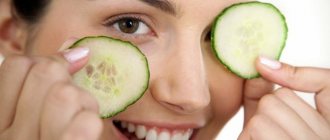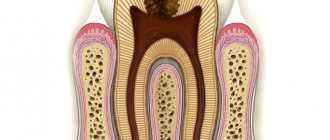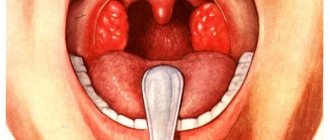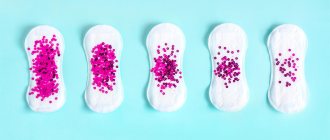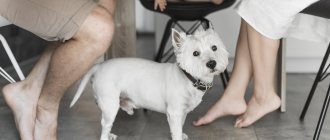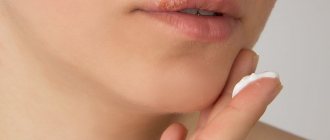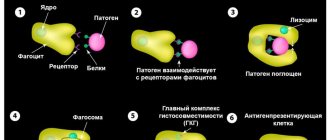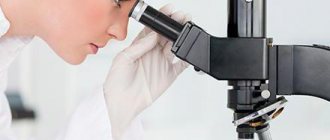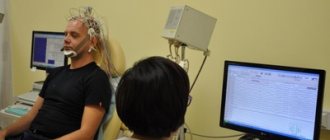Problem skin and ways to solve problems
I often come across two opposing points of view:
Any procedures for acne are useless, because the problem is “from within”.
Answer: of course, if you live in the thought of saving cleansing, then in reality there will be zero benefit. But when a doctor works with acne, the approach is comprehensive.
And the procedures in this approach are not the least important, because it is necessary to carefully and timely remove blockages, help the skin renew itself properly, and reduce the risk of scarring in people prone to this.
I'm not even mentioning what amazing anti-inflammatory drugs there are today that can save you in the most acute periods. There is always the option to be treated without procedures, but it takes much more time. And still there will come a time when you will need to work with scars and post-acne spots. So isn't it easier to do both at the same time?
Even when the budget is very limited, you can go to the recommended cleanings.
Everyone hopes for the procedure, but what about the causes of the rashes doesn’t matter.
Answer: Modern dermatology and cosmetology can bring skin with acne, even with severe degrees, to an almost ideal condition. Care, systemic treatment, a course of procedures will do their job. But think about what will happen when the treatment is completed, but there was no time to look for reasons? And I'll tell you what will happen. Everything is exactly the same as before treatment. The reason does not necessarily lie in gynecology, maybe it is in nutrition in general, for example. But in any case, this point must be clarified at the very beginning of the journey, so as not to tear your hair out later.
And a small nuance:
Whatever causes acne in your case, do not relax after treatment. I will cure the skin, but I cannot remove the acne gene from your DNA) this predisposition will remain with you for life. So freshly clear skin is not a reason to slather yourself in oil or wash down your burger with a glass of whole milk every day.
POSTAKNE - solution, going to a cosmetologist
What post-acne is is known to everyone who has experienced an invasion of acne, no matter when it was a teenager or for the first time as an adult. Skin rashes (acne, acne) often leave behind scars, or at least stagnant spots. All this does not make the skin tone even and brings some inconvenience. Masking every day is tedious, waiting for post-acne to go away is either useless in the case of scars, or takes a long time if these are stagnant spots.
- Your acne has gone away, but you still haven’t said goodbye to your foundation?
- Stagnant spots just won't go away?
- Are the scars visible in pits in any poor lighting?
REVIEWS OF ACNE PATIENTS. Full review
I will find the cause of your acne!
CLICK on one photo to view the entire photo gallery
There are 4 degrees of acne severity:
- One or two areas of the face are affected. Open and closed comedones are observed with a significant predominance of open comedones. There are isolated superficial papules and pustules.
- Several areas of the face and body are affected. A large number of open and closed comedones. Single papules and pustules.
- Against the background of open and closed comedones, a large number of deep pustules and papules are diagnosed. Hyperemia of the affected areas is common due to a pronounced inflammatory reaction. There are post-acne phenomena: scars, stagnant spots, hyperpigmentation.
- Large (more than 5 mm in diameter) bluish-purple painful infiltrates, conglobate elements (several large nodes located nearby, connected by fistulous tracts), large cysts that resolve with the formation of rough atrophic scars are observed.
Acne, rashes, comedones
The treatment process is now underway
Self-cleaning products, alcohol lotions, super-hyped brushes and creams, anti-acne oil - this is not a complete list of what patients try to remove such rashes before visiting a doctor. This lasts for years.
The difference between the photos is 1 month. To be honest, in this case there was a strong reaction to treatment, a quick result that will need to be maintained. Continue treatment care for a long time, remove stains with peelings. We're in the process.
How to treat acne
As you understood from the previous block, there are many reasons for the appearance of acne. You can treat the external manifestations of acne as much as you like, but until the true cause of their appearance is found, all measures taken will only bring a temporary effect. Therefore, it is important to consult a doctor promptly, even at the first stage of the disease.
But you should understand that no doctor can just look at you, immediately name the cause and prescribe treatment. It is necessary to conduct a diagnosis to identify the true cause and select a treatment regimen that will be effective.
Be patient. It is not possible to cure acne in a couple of weeks. Therapy of several months is required to completely eliminate the cause of the inflammatory process and reduce the risk of relapse. Don't give up treatment halfway!
Acne, rashes, comedones
The treatment process is now underway
Self-cleaning products, alcohol lotions, super-hyped brushes and creams, anti-acne oil - this is not a complete list of what patients try to remove such rashes before visiting a doctor. This lasts for years.
The difference between the photos is 1 month. To be honest, in this case there was a strong reaction to treatment, a quick result that will need to be maintained. Continue treatment care for a long time, remove stains with peelings. We're in the process.
Acne, rashes, comedones. Before and after.
It seems that the degree of acne is not severe, and there are no very bright and painful rashes, but it is still clear that the quality of the skin leaves much to be desired. And the patient is completely dissatisfied with the condition of his face. There are many comedones that periodically become inflamed, uneven relief, the skin sometimes dries out, sometimes becomes oily, it has a gray and uneven color.
The difference between before and after is obvious, the patient is simply delighted that her skin can look good, be so smooth and well-groomed. The efforts consisted of high-quality home care, several foods were excluded from the diet, recommended procedures - cleansing, peeling.
Cosmetologist's work:
- The period between photos is about 1.5-2 months
- Home care
- Selected diet
- Procedures: Facial cleansing and peelings
Pimples, rashes and blemishes, post-acne
The treatment process is now underway
Bright, noticeable rashes on the face, the spots that remain after them, and often scars - this is what people want to get rid of when visiting a cosmetologist. Solving this problem is not a matter of weeks and often not even months. When the face gradually clears up, there is no limit to the happiness of my patients; there is no need to encourage and motivate as much as at the beginning of treatment, the obvious result gives strength and faith in success.
In this case - examination, external treatment, cleaning procedures, peelings and anti-acne injections. The period between photos is 3 months. This is not the final result, we are still in the process.
Pimples on the back. Before and after
A young girl developed rashes on her back after a course of oil massage. The patient is prone to rashes on her face, but inflammation appeared on her back for the first time.
After completing the massage course, the inflammation gradually began to subside without treatment, but it left behind these bluish-red spots, which in turn, when they disappeared, were replaced by pigmented ones (post-inflammatory pigmentation)
Therefore, there was very little chance of an even skin color without procedures. The cosmetologist dealt with this. In order to remove residual inflammatory elements and stains, a coral peeling procedure was prescribed.
Rehabilitation took 3-4 days, a total of 2 procedures were required, which in this case significantly reduced the number and severity of post-acne spots. the patient was very pleased with the result.
Cosmetologist's work:
- Coral peeling
- only 2 procedures
Phototherapy and lasers for acne treatment
Phototherapy and lasers are used to treat acne - either endogenous porphyrins contained in P. acnes, or sources of exogenous porphyrins are additionally applied to the skin before the procedure. Porphyrins have the property of absorbing light in the blue regions of the spectrum (wavelength 415 nm), which leads to the formation of unstable oxygen and, as a result, to the destruction of pathogenic bacteria P.acnes. The FDA recommends Lumenis devices (for example, the IPL module of the M-22 device), which use high-intensity light from the blue part of the spectrum, for the treatment of papulopustular acne, i.e. acne.
Light from the red part of the spectrum can also be useful because... Compared to blue light, it has a stronger anti-inflammatory effect (although it has a lesser effect on porphyrins). Therefore, a combination of light from the blue and red parts of the spectrum will be even more useful. Facial procedures are carried out 2 times a week for 15 minutes. According to the dermatology textbook Fitzpatrick's Dermatology, after a 4-week course of therapy in 80% of patients, the number of acne decreased by 60%. But in the absence of supporting procedures, their number returns to the original level - within 3-6 months.
Photodynamic therapy is even more effective in treating acne. It consists of applying exogenous porphyrins to the skin 1 hour before the procedure (aminolevulinic acid/ALA), after which exposure to a high-power light source occurs. The latter can be pulsed dye lasers, intense pulsed light or a broadband light source in the red part of the spectrum. ALA is metabolized in the sebaceous glands and hair follicle to porphyrins, which when exposed to light lead to the release of unstable oxygen, which damages the sebaceous glands. Several photodynamic therapy treatments can provide improvement for up to 5 months.
Pulsed KTP laser (wavelength 532 nm) - also leads to a reduction in the number of acne by about 40%. Using this laser 2 times a week for 2 weeks, i.e. a total of 4 procedures are required). In addition, some of the non-ablative infrared lasers at 1450 nm and 1320 nm wavelengths may also be useful for treating acne. they cause thermal damage to the sebaceous glands. However, any of these lasers requires a course of several treatments (and the improvement lasts up to about 6 months).
One of the newest acne treatment devices is the Isolaz device (from Solta Medical). The nozzle of the device is made in the form of a photo-pneumatic device, which creates negative pressure that sucks out the fatty secretion from the mouths of the hair follicles. Immediately after this, broadband pulsed light (wavelength from 400 to 1200 nm) is turned on, which acts on the P. acnes porphyrins, destroying these bacteria, and also has an anti-inflammatory effect.
What do phototherapy and lasers do?
Regular use in courses not only improves the course of acne, thereby reducing the number of inflammatory elements. The use of phototherapy (IPL) and lasers in courses often avoids the need for oral medications (antibiotics, isotretinoin), as well as the numerous side effects associated with them. But the cost of such treatment is high. We hope that our article on the topic: How to remove acne on your face was useful to you!
Sources:
1. Higher medical education of the author of the article, 2. Textbook on dermatology “Fitzpatrick's Dermatology” (8th edition), 3. “Modern methods of treatment and rehabilitation of patients with acne vulgaris” (Barinova), 4. “Acne from the position of evidence-based medicine” (Anisimova), 5. “Cellular mechanisms of barrier protective functions of the skin and their disorders in skin diseases” (Medelets).
Pimples on the cheeks. Before and after
Solving your acne problem is often only half the battle.
This beauty fell into my hands after almost all the rashes had passed. There were small scars left, lucky that they were quite flat (level with the skin, the relief was practically unchanged) and already quite annoying stagnant spots. The request was to work specifically with skin tone, i.e. with bluish spots.
The result in the photo is not just one procedure; it seems to me that the difference between the photos is about a year. But the visits were not frequent, mostly once every 4 weeks. Some procedures were traumatic, others not so much.
The effect increased gradually, but my patient began to notice improvements almost immediately. I remember how they laughed, her mother did not believe that this was the work of a cosmetologist
“It can’t be, most likely you’ve started eating normally,” my mother said. But actually, this is even a compliment; modern methods can do a lot, despite the fact that they believe in diet more))
The spots are gone, the scars partially remain, but they are small and almost invisible. The skin tone is much more even, which is what we wanted. And most importantly, happy eyes
Cosmetologist's work:
- Permanent procedures
- Once every 4 weeks
- Increasing effect
- Even skin tone
Pimples on the forehead. Before and after
This path to clear skin turned out to be short-lived, but it was not without losses. And we lost kilograms of dairy products along the way. It was difficult in places, sometimes you ask for milk in your coffee, sometimes the omelette winks
Of course, we selected therapeutic care and a regimen of external medications. As you can see from the feedback, it turned out that clear skin is worth these efforts, which ultimately become the norm and do not cause problems.
When the skin has cleared, there is no need to relax with either care or nutrition. The tendency to rashes will be with you all your life and your skin will find a reason to remind you of it, believe me.
Yes, it is possible to gradually return products after some time, just in a smaller volume and not all of them. This is discussed with your doctor.
Cosmetologist's work:
- Clean forehead
- Skin without rashes
- Selected care
- External preparations
- Got rid of dairy products
- Will remain prone to rashes
Acne treatment
There is no single treatment regimen, so it is best to consult a dermatologist-cosmetologist. After the examination and if necessary, the doctor:
- Prescribe tests that can help determine the cause of acne.
- Prescribe a course of external treatment and, if necessary, depending on the severity of acne, systemic medications taken orally.
- Develop a program for cleansing, toning and moisturizing the skin. She will select cosmetics for daily care, recommend decorative cosmetics, foundations, and sunscreens.
- Prescribe cosmetic procedures that will relieve inflammation and help cope with the consequences of acne.
- It will help you develop an individual diet aimed at cleansing and healing the entire body, and therefore the skin.
Acne on the face. Before and after
No matter what you call acne, the essence does not change. Discomfort, low self-esteem and thick foundation accompany almost all girls and young people when they come to see a doctor. Treating acne does not involve a miracle procedure or a drugstore ointment. The essence of it, first of all, is to understand that problem skin is a lifelong problem. But at the same time, you can fine-tune all processes from nutrition to care, undergo a course of treatment and move on with life with clear skin. Or you can rely on a super remedy, not take responsibility for your skin and scold doctors, and of course suffer with acne until retirement.
I am not proud of the result of my work, but of my patients. Each of them has a goal - clear skin without acne and scars, and they go towards it no matter what. In this case, work with related specialists, skin treatment and just the beginning of eliminating spots and scars after acne. But the effect of common efforts is already evident.
Preparations with benzoyl peroxide –
Benzoyl peroxide is a bactericidal component and is probably the best remedy for acne (it can even be called the gold standard of therapy). This is a bactericidal component that effectively inhibits the growth of P. acnes bacteria, leading to the development of local inflammation in the area of hair follicles and the appearance of papules and pustules (pimples). It is very important that benzoyl peroxide, unlike antibiotics, does not cause the emergence of antibiotic-resistant microflora.
Professional pharmaceutical preparations with benzoyl peroxide are produced in the form of a gel (usually with a concentration of 2.5 or 5%). For the first month, in order to get the skin accustomed to benzoyl peroxide, it is optimal to use a concentration of 2.5%, and then switch to 5% of the product. If you use more concentrated products at once, irritation will likely appear on the skin. The classic monocomponent preparation with benzoyl peroxide 2.5 or 5% is Baziron-gel.
Combination drugs - but there are drugs where benzoyl peroxide is combined with an antibiotic or retinoid. As you will see below, each of these drugs will be effective in slightly different clinical situations, for example, depending on what type of inflammatory components (papules or pustules) you have. Examples of combination drugs for acne treatment:
- Indoxyl (UK) – benzoyl peroxide 5% + clindamycin 1%.
- Effezel (France) – benzoyl peroxide 2.5% + retinoid adapalene 0.1%.
How to choose the right drugs:
1) For mild to moderate papulopustular acne, the choice depends on the predominance of certain inflammatory elements. If papules predominate (without pus inside), then in this case the combination of “benzoyl peroxide + retinoid” will be optimal. For example, this could be the combination drug Effezel. But for patients with sensitive skin, it is better to use a combination of two monodrugs - benzoyl peroxide in the morning and a retinoid in the evening.
Thus, you can use the drug “Baziron” with benzene peroxide in the morning, and in the evening – one of two drugs “Klenzit” or “Differin” (containing the retinoid adapalene) of your choice. But if you have pustules with pus, then to the above combination of “benzoyl peroxide + retinoid” we also add external use of an antibiotic.
2) For severe papulopustular acne, we also use “benzoyl peroxide + retinoid” for external use, and also add systemic antibacterial therapy. Antibiotics for this form are used only orally, in long courses of up to 6-8 weeks (see above).
Side effects of benzoyl peroxide: Be aware that itching, burning sensation, dryness, tightness, redness, or flaking of the skin may occur after use. But usually these effects are not too pronounced. If you use the drug during active sunny periods, be sure to use sunscreen, because Benzoyl peroxide makes facial skin more sensitive to sunlight.
Post-acne on the face, vascular network. Before and after
Most often, working on skin quality is not a very quick process. The advantage is that we can enhance active procedures with home care, gradually add those procedures that are needed, and increase the impact. In this case, we met once every 2 weeks for the first 3 months, and then once a month. And gradually we came to this result.
It’s hard not to notice it from the photo, but in fact, the patient was very surprised to see the “before” photo, because she saw the improvements gradually and also got used to them. We relieved inflammation, removed post-acne spots, evened out the complexion (working with the vascular network). Yes, not quickly, there is a 1.5-2 year difference between the photos, it could have been faster if desired. As a result, we got a huge difference, the patient is happy and most importantly, she now knows what results thoughtful facial skin care gives.
Causes of acne
You've probably heard the misconception more than once that acne is the result of poor hygiene. In reality, it is a complex skin condition involving hormonal, dietary and hereditary factors, and for all these reasons and more, acne requires a holistic approach. Treatment largely depends on the severity of the disease. If you have acne, never use alcohol or sulfates in hopes of freeing your skin from the unpleasant disease.
Acne can appear for the following reasons:
- Hormonal imbalance. With increased testosterone production in men and women, intense accumulation of sebum occurs in the glands. This turns out to be a favorable environment for the development of bacteria. Increased testosterone production in women may be associated with ovarian dysfunction. During adolescence (10-18 years), the formation of the endocrine system and puberty occurs. Often at this age, boys and girls experience active production of testosterone, which is what causes acne.
- Disorders of the autonomic nervous system. Frequent stress, lack of sleep, fatigue, increased physical activity, endocrine changes in the body (for example, after childbirth) lead to an imbalance in the work of the sympathetic and parasympathetic parts of the autonomic nervous system. In this case, again, the human sebaceous glands work more intensively.
- Decreased immunity. The skin's natural defenses can be disrupted by bad habits, stress, poor diet, and abuse of ultraviolet rays. As a result, bacteria and fungi multiply, causing acne.
- Hereditary predisposition. If parents have had acne, then there is a high chance that their children will also suffer from this problem. An increased level of testosterone, the level of sensitivity of the sebaceous glands to the effects of sex hormones, a tendency to form defective sebaceous glands, and much more can be inherited.
- Dietary disorder. Floury and sweet foods, as well as sugar, which is found in almost all foods, lead to the development of large amounts of insulin. As a result, the production of male sex hormone increases. And this, as we have already learned above, leads to increased production of sebum. The abundance of unhealthy fats in the body leads to the development of bacteria, which cause acne on the body and face.
- Diseases of the gastrointestinal tract, pathologies of the endocrine system. Acne is often a symptom of internal diseases. For example, diseases of the digestive system lead to the fact that food is not fully absorbed and stagnates. Acne is most often formed due to pathologies such as dysbiosis, constipation, irritable bowel syndrome, acute and chronic gastritis, and stones in the bile ducts.
- Incorrect cosmetic care. This includes failure to comply with personal hygiene rules and the use of low-quality decorative cosmetics. On the contrary, if the skin is constantly subjected to cleansing, it loses its natural protection and the acid-base balance is disturbed. As for low-quality cosmetics: viscous products that contain oils and glycerin are considered especially dangerous. Such cosmetics clog pores and create a microfilm on the surface of the skin that impedes breathing.
Milia, whiteheads or wen. Before and after
Milia, the so-called whiteheads or wen, occur in many people. Single or multiple, they are usually disturbing because they are located on the most visible areas of the face - cheekbones, eyelids. When used in large quantities, they create the impression of pain or unkemptness.
Removing them is not difficult for an experienced cosmetologist. In this case, we did a facial cleansing, during which we removed both comedones (blackheads) and milia. The photo shows the face a week after the procedure. Everything healed well and without traces.
How do acne appear?
Acne usually first appears in teenagers. To a greater or lesser extent, acne affects 100% of boys and up to 90% of girls during puberty. By the age of 25-30, the number of people suffering from acne decreases significantly, but in severe cases, acne can bother a person even into adulthood.
Acne goes through several stages of development. Initially, small bumps or bumps form on the skin. They are small sebaceous plugs. Often, the sebum of these plugs oxidizes, so-called “black dots”, that is, comedones, are formed.
A gland clogged with a sebaceous plug is an excellent breeding ground for bacteria. Therefore, pimples often become inflamed: they turn red and develop suppuration. The pustule then ruptures and the skin gets rid of accumulated sebum and infection. However, the consequence of this can be unsightly enlarged pores and scars on the skin. Therefore, it is imperative to treat acne.
